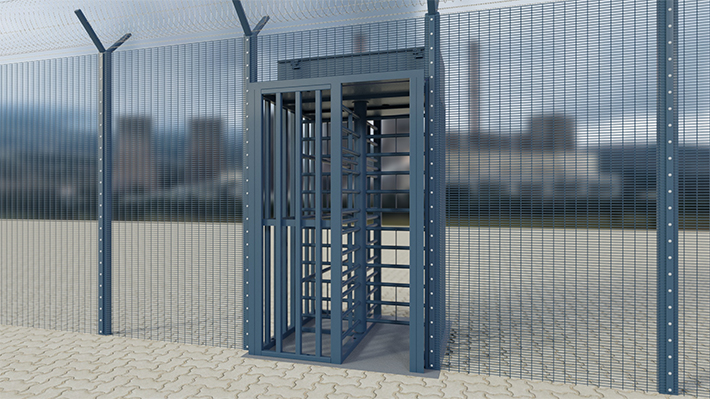
In an increasingly unpredictable world, security has become a paramount concern for governments, businesses, and individuals. The threat of terrorism, in particular, has forced a reevaluation of security measures, leading to the development of new standards and technologies to protect against acts of terror. One such standard that has gained prominence in the realm of anti-terrorism measures is LPS 1175. In this comprehensive article, we will explore the significance of LPS 1175, its relevance in today’s security landscape, and its role in safeguarding against terrorism.
Understanding the Threat of Terrorism
Before delving into the specifics of LPS 1175, it is essential to comprehend the nature and magnitude of the terrorism threat. Terrorism is a global problem, with perpetrators often targeting high-value assets, public spaces, and critical infrastructure. The consequences of a successful terrorist attack can be devastating, leading to loss of life, property damage, economic disruptions, and significant psychological trauma.
Terrorist organizations continuously adapt and innovate their tactics, making it essential for security measures to evolve and keep pace. The need for robust security standards and practices is more pressing than ever. This is where LPS 1175 comes into play.
What is LPS 1175?
-
LPS 1175 – An Overview
A security standard called LPS 1175 was created by the Loss Prevention Certification Board (LPCB), a division of BRE Global. The LPCB is an independent certification body that specializes in security and fire safety products. LPS 1175 sets the benchmark for physical security and is widely recognized as the authoritative standard for intruder-resistant building components, strong points, and systems.
The primary aim of LPS 1175 is to provide a classification system for security products and systems based on their resistance to forced entry. It assesses and classifies products and systems in terms of their ability to withstand unauthorized access through various methods, including physical attack, tools, and manipulation. In essence, LPS 1175 helps in identifying the strength and effectiveness of security measures.
The Role of LPS 1175 in Anti-Terrorism Measures
-
Assessing Vulnerabilities
One of the key roles of LPS 1175 in anti-terrorism measures is to help organizations and governments assess vulnerabilities. By subjecting security products and systems to rigorous testing, LPS 1175 identifies weak points and areas that require improvement. This assessment process is crucial in the context of anti-terrorism measures because it allows stakeholders to understand their security gaps and take proactive steps to rectify them.
-
Developing a Layered Security Strategy
LPS 1175 encourages the development of a layered security strategy. In the face of terrorism threats, relying on a single security measure is often insufficient. A layered approach combines multiple security measures to create a robust defence system. LPS 1175’s classifications help in selecting and integrating security products and systems at different levels, from perimeter security to secure access points, to ensure a comprehensive security framework.
-
Standardization and Certification
The global reach and recognition of LPS 1175 offer a standardized approach to security. This standardization is particularly relevant in anti-terrorism measures, as it allows for consistent evaluation and comparison of security products and systems. Organizations can trust that products and systems certified under LPS 1175 meet specific criteria for resistance to forced entry, making it easier to make informed decisions about their security infrastructure.
Understanding LPS 1175 Classification Levels
To appreciate the role of LPS 1175 in anti-terrorism measures, it’s crucial to understand the classification levels within the standard. LPS 1175 classifies security products and systems into seven levels, with level 1 being the least resistant and level 7 being the most resistant. The classification is based on rigorous testing and assessment of the product’s ability to withstand forced entry.
-
Level 1 and 2
Level 1 and 2 classifications are typically suitable for low-security applications. These levels protect against opportunistic and unskilled intruders. While not specifically designed for anti-terrorism purposes, they can still contribute to a more secure environment, particularly when used in conjunction with other security measures.
-
Level 3
Level 3 is where security measures start to gain relevance in the context of anti-terrorism. Products and systems classified at this level offer resistance against deliberate forced entry attempts, including the use of tools like crowbars, screwdrivers, and knives. Such resistance can deter or delay unauthorized access, giving security personnel more time to respond to threats.
-
Level 4
At level 4, the security measures become notably more robust. Products and systems classified at this level can withstand sustained attacks with tools such as chisels, hammers, and power tools. This level of resistance is critical in scenarios where there is a heightened risk of a terrorist attack.
-
Level 5
Level 5 classifications are designed for applications with a significant risk of terrorism. These security measures can withstand determined and well-prepared attackers using heavy-duty tools. The enhanced resistance they offer is vital for anti-terrorism efforts, as it can deter or delay attackers until law enforcement or security personnel can respond effectively.
-
Level 6 and 7
Level 6 and 7 are the highest classifications within LPS 1175. Products and systems classified at these levels are engineered to resist sustained and organized attacks by skilled and determined intruders using tools like high-powered angle grinders and cutting torches. While these classifications are not exclusively for anti-terrorism purposes, they play a crucial role in protecting high-value assets and critical infrastructure against potential acts of terror.
The Relevance of LPS 1175 in Different Sectors
The significance of LPS 1175 extends across various sectors, where security is of paramount importance. Let’s explore how LPS 1175 is relevant in these different contexts:
-
Commercial and Industrial Facilities
For commercial and industrial facilities, protecting assets, employees, and operations is a top priority. LPS 1175 provides a framework for selecting security measures that match the level of threat faced by these facilities. This is especially relevant in an age where terrorism poses a significant risk to commercial and industrial infrastructure.
Products and systems classified under LPS 1175 can be used to secure entrances, windows, and other potential points of vulnerability. In particular, level 4 and 5 classifications are often chosen to safeguard against more determined attacks.
-
Critical Infrastructure
Critical infrastructure, such as power plants, transportation hubs, and government facilities, is a prime target for terrorist attacks. The robustness of LPS 1175 classifications is invaluable in protecting these assets. A well-implemented LPS 1175-compliant security system can deter or delay terrorists, providing essential time for authorities to respond and mitigate potential damage.
In this context, levels 6 and 7 classifications are often preferred, as they offer the highest level of protection against organized and skilled attackers. For example, perimeter fencing and access control systems designed to LPS 1175 standards can significantly enhance security at power plants.
-
Residential Security
While LPS 1175 is typically associated with commercial and industrial security, its principles can also be applied to residential settings. Home invasions are a real concern for many individuals, and LPS 1175 classifications can help homeowners make informed decisions about their security.
Conclusion
LPS 1175 plays a vital role in enhancing anti-terrorism measures across various sectors, from critical infrastructure to residential security. Its rigorous classification levels provide a standardized framework for selecting security products and systems that resist forced entry. Whether it’s a security system supplier recommending LPS 1175-compliant barriers or a facility manager installing LPS 1175-certified turnstile, the adoption of this standard is a proactive step in fortifying defences against terrorism. The continuous evolution of LPS 1175 reflects the dynamic nature of the security landscape, ensuring that we remain resilient in the face of evolving threats.



